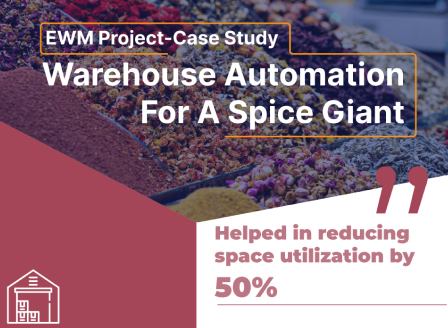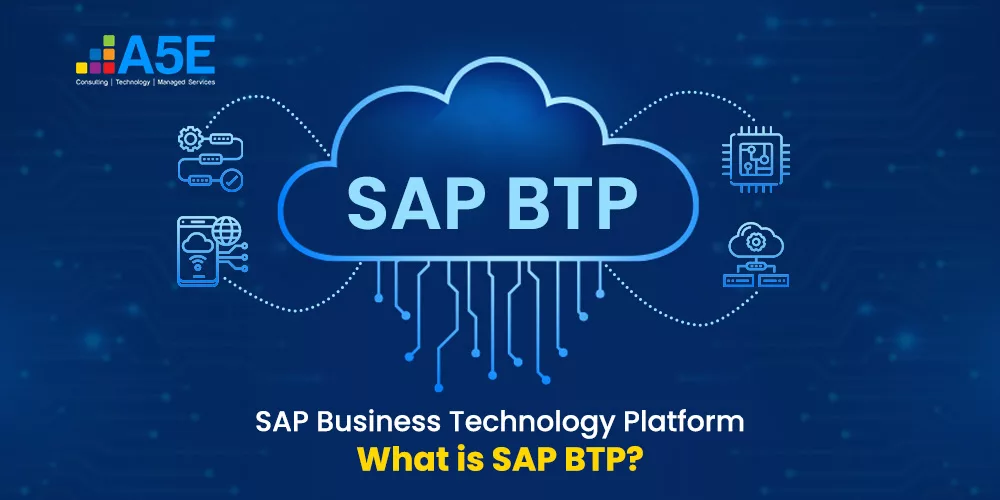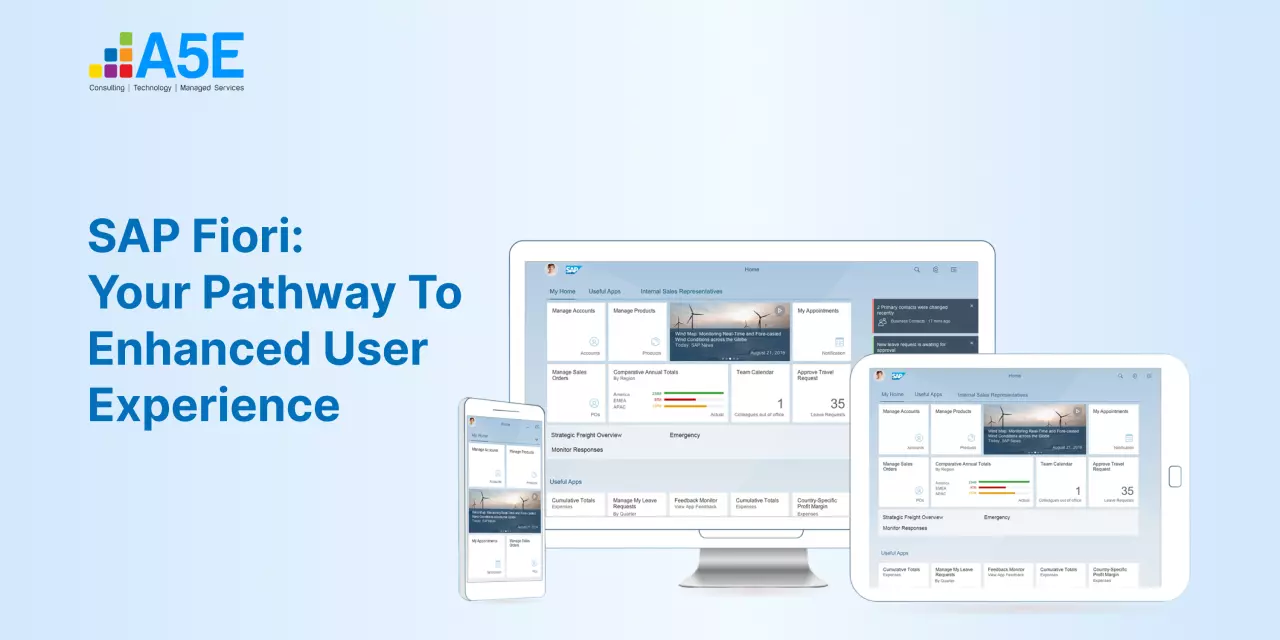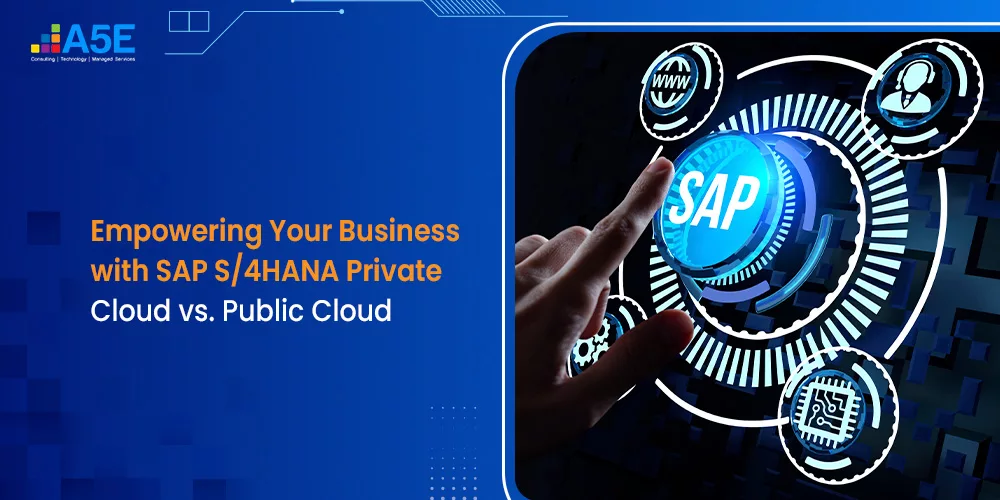
SAP S/4 HANA Migration Driving Digital Transformation
As a trusted SAP consulting company, we understand the importance of SAP ECC to S/4 HANA migration for modernizing business processes and staying competitive. With SAP ending support for ECC by 2027, it becomes important to focus on ECC to S/4 HANA migration strategy. Our SAP S/4 HANA migration services offer enhanced capabilities like real-time data processing and support for AI, machine learning, and IoT.
Our approach is designed to guide companies through the ECC to S/4 HANA migration smoothly. We help you save time and optimize your business processes with a proper roadmap. Trust us to navigate the complexities of migrating to S/4 HANA and unlock the full potential of SAP’s next-generation ERP solution.
What is SAP S/4 HANA migration?
An SAP S/4 HANA migration is more than just an update. It’s a strategic shift from older on-premise SAP ERP systems (like SAP ECC) to a streamlined SAP S/4 HANA suite. This new suite can be hosted on-premise, in the cloud, or even as a hybrid model, giving you flexibility in deployment. While migration from ECC to S/4 HANA migration with SAP implementation methods are meant to be more challenging but effective.
Lets understand more about how SAP S/4 HANA migration services help businesses to achieve digital transformation.
SAP ECC To S/4 HANA Migration: Becoming An Intelligent Enterprise
Many companies will be migrating to S/4 HANA in the coming years for their digital transformation journeys. To survive in today’s digital world, businesses need a two-distinct approach: SAP digital transformation and SAP S/4 HANA Migration. SAP ECC to SAP S/4 HANA migration, the successor to ECC, represents a strategic move towards an intelligent ERP suite. SAP S/4 HANA uses SAP’s in-memory database and real-time analytics, enabling faster decision-making and delivering remarkable speed and cost savings.
However, ECC to S/4 HANA migration can be expensive and complicated. But if you do it right, it can give you some immediate benefits that make it easier to get buy-in and resources.
SAP S/4 HANA migration approach optimizes the management of critical applications on a unified infrastructure, simplifying operations with a single operating system and database while offering an impressive user interface. The migration to SAP S/4 HANA enhances business processes, boosts productivity, and prepares your business for future challenges. SAP solutions offers a suite of powerful tools and solutions designed to simplify and enhance your SAP S/4 HANA migration strategy.
SAP S/4 Migration for Digital Transformation
Digital transformation is about using technology to create value for customers, and SAP S/4 HANA plays a key role in this process by improving business processes and boosting productivity. Many organizations are now migrating to SAP S/4HANA to ensure their critical operations stay up-to-date and secure. Moving to the cloud, although beneficial, can be complex. That’s why SAP introduced the Rise With SAP Program, which streamlines the entire organizational setup. This program eliminates complexities and simplifies the transition to the cloud.
Why Do We Need SAP HANA Migration?
Starting in 2027, SAP will discontinue support for legacy systems like SAP ECC 6, which implies that businesses relying on these systems will face challenges in receiving ongoing assistance and updates from SAP. This discontinuation of support includes critical aspects such as security patches, legal compliance updates, and bug fixes. As a result, companies using SAP ECC 6 will be exposed to potential security risks, compliance issues, and operational inefficiencies.
Migrating to S/4 HANA is a significant undertaking for any organization, as it involves transitioning from an older SAP system to SAP’s next-generation business suite. This migration is driven by the need to leverage advanced features, modernize business processes, and stay competitive in the ever-evolving digital landscape. Migration to S/4 HANA is essential for organizations seeking to remain agile, competitive, and data-driven.
Navigating the SAP S/4 HANA Migration Journey with SAP’s Powerful Tools
S/4 HANA Migration is a strategic decision that can bring about significant benefits for organizations, including enhanced operational efficiency, improved customer satisfaction, and accelerated innovation. However, undertaking such a complex transformation requires careful planning, expert guidance, and the right tools to streamline the process. SAP software solutions offers a suite of powerful tools and solutions designed to simplify and enhance your SAP HANA migration journey, ensuring a smooth transition and maximizing the value of your investment.
How SAP S/4 HANA Migration Benefits Your Organization?
1. Enhanced Performance: SAP S/4 HANA, SAP’s latest ERP platform, is built on the powerful SAP HANA database technology, empowering businesses to harness the full potential of their data. By migrating to S/4 HANA, organizations gain access to real-time data insights, enabling them to make faster, more informed decisions. This comprehensive big data analysis supports corporate-wide planning, agile decision-making, and speedy execution of complex transactions.
2. Streamlined Processes: SAP S/4 HANA streamlines your organization’s IT environment, making it more transparent and centralized. After integration, organization’s workflows and business processes become more efficient and easier to manage thanks to automation capabilities. This leads to benefits across all departments in your organization.
3. Elevated User Experience: SAP S/4 HANA migration services offers a more user-friendly experience, with SAP Fiori providing an intuitive and customizable interface. It delivers clear insights into your organization’s corporate data and transactions, ensuring you always have a comprehensive overview.
4. Innovate Your Business: Data migration in SAP S/4 HANA seamlessly integrates with forward-looking technologies like Artificial Intelligence, Machine Learning, Internet of Things, and Robotic Process Automation. These innovations enhance workflow efficiency, productivity, and future-readiness.

5. Increased Agility: SAP S/4 HANA outperforms ECC by offering a range of deployment options. Whether you choose on-premises hosting or opt for a public, private, or hybrid cloud solution, you can provide global access to your organization’s corporate data resources, enhancing your organization’s flexibility and agility.
6. High Sustainability: The integrated SAP S/4 HANA database’s in-memory technology operates more efficiently and requires less storage space. This not only reduces your organization’s data footprint but also lowers maintenance costs. Additionally, SAP S/4HANA provides tools for measuring your organization’s carbon footprint, contributing to ecological sustainability.
7. Optimized Total Cost of Ownership (TCO): Data Migration in SAP S/4 HANA simplifies IT infrastructure, handling larger data volumes and transactions. This enables organizations to achieve more with fewer resources, reducing ongoing operational costs, such as hardware expenses, while accelerating time-to-value. Deployment options like cloud, on-premises, or hybrid further streamline the IT landscape and optimize TCO.
8. Seamless Integration: SAP S/4 HANA seamlessly integrates with other SAP applications, present and future. This is especially valuable for organizations already using SAP products, such as Ariba, SAP Analytics Cloud, and Field Glass, as it ensures effortless integration with their existing SAP environment.
SAP S/4 HANA Migration Steps for Digital Transformation
Migrating from ECC to S/4 HANA is a significant undertaking that requires careful planning, expert guidance, and a clear understanding of best practices to ensure a successful transition. By following these best practices, organizations can minimize risks, maximize the benefits of SAP S/4 HANA, and achieve their business objectives.
- Define Clear Migration Goals and Objectives
Before diving into the SAP S/4 HANA migration process, organizations should establish well-defined goals that align with their overall business strategy. These goals should adhere to the SMART criteria: Specific, Measurable, Achievable, Relevant, and Time-bound. Clear objectives will guide you in SAP S/4 HANA digital transformation journey
- Assess the Current IT Landscape and Data Quality
Prior to embarking on the data migration in SAP S/4 HANA, a thorough assessment of the existing IT environment is essential. This includes evaluating legacy systems, data architecture, application integrations, and data quality. Identifying potential data issues, such as inconsistencies, duplicates, or missing values, early on can prevent downstream problems and ensure data integrity during migration.
3. Develop a Detailed Migration Plan
A well-structured SAP S/4 HANA migration plan is essential for managing the project effectively and minimizing disruptions to business operations. The plan should outline the migration timeline, tasks, responsibilities, milestones, and dependencies. It should also include contingency plans to address potential risks and challenges.
- Leverage SAP Migration Tools and Methodologies
SAP offers a variety of tools and methodologies to streamline the migration process, such as the SAP Migration Cockpit and SAP Data Migration Cockpit. These tools can help automate tasks, manage data migration, and provide insights into the migration progress.
- Engage Experienced SAP Consultants
Partnering with experienced SAP consultants can provide valuable expertise and guidance throughout the migration process. Consultants can help assess the organization’s readiness, develop a tailored migration plan, and address technical challenges.
- Prioritize Change Management and User Adoption
Migrating to SAP S/4 HANA often involves significant changes to business processes and workflows. Effective change management is crucial to ensure that employees are prepared for these changes and adopt the new system effectively. This includes providing comprehensive training, addressing user concerns, and fostering a culture of acceptance and adaptation.
- Conduct Thorough Testing and Validation
Rigorous testing and validation are essential to ensure that the migrated SAP S/4HANA system meets all business requirements and performs as expected. Testing should cover all aspects of the system, including functionality, performance, integration with other systems, and data integrity.
- Implement Ongoing Support and Monitoring
Ongoing support is essential to address post-migration issues, provide ongoing training, and implement updates and enhancements as needed. This support should include a dedicated team of experts who can provide prompt assistance to users and resolve any issues that arise.
- Measure and Communicate Migration Success
Establish metrics to measure the success of the migration project. These metrics should align with the initial migration goals and objectives. Regularly communicate the migration progress and achievements to stakeholders to maintain transparency and buy-in.
- Continuously Improve and Optimize SAP S/4 HANA
SAP S/4 HANA is a dynamic platform that offers continuous innovation and improvement opportunities. Organizations should establish a process for continuous improvement, identifying areas for optimization, implementing new features, and adapting to evolving business needs.
SAP S/4 HANA Migration Strategy
A5E Consulting, we are known as a trusted SAP Gold Partner in India for seamless SAP S/4 HANA migrations tailored to your business needs. As SAP ECC approaches its end of support, it’s important to plan the S/4 HANA Migration approach strategically.
Our comprehensive SAP S/4 HANA migration services encompass three key approaches: Greenfield, Brownfield, and Hybrid, designed to optimize your digital transformation journey.
- Greenfield: With our Greenfield approach, we start fresh by implementing a new SAP S/4HANA system tailored to your business requirements. This option gives the organization the most flexibility to customize the software to their specific needs. However, it can also be the most time-consuming and expensive option.
- Brownfield: This is a “lift and shift” approach that moves existing systems like ECC onto the S/4 HANA platform. This option preserves the organization’s existing processes and customizations, but it may not take advantage of all of the new features and functionality of S/4 HANA.
- Hybrid: This is a combination of the greenfield and brownfield approaches. Some existing systems are moved to S/4 HANA “as is,” while others are adapted to take advantage of the new technology. This option can offer a balance of flexibility and efficiency.
Our Expertise in SAP S/4 HANA Migration:
- Proven expertise in SAP technologies and migrations.
- Tailored strategies aligned with your business goals and timelines.
- Seamless transition with minimal downtime and risk mitigation.
- Ongoing support and optimization to maximize ROI post-migration.
- Dedicated team of certified consultants committed to your success.
A5E Consulting: Right Partner for SAP S/4 HANA Migration
Creating a strategic plan for SAP S/4 HANA migration approach is crucial for building a solid foundation for future processes and applications. Migration from ECC to S/4 HANA brings value by improving decision-making and guiding you through your digital transformation journey.
As a leading SAP gold partner in India, A5E Consulting specializes in implementing and supporting migration to S/4 HANA, offering best SAP consulting services. We empower businesses with the tools and knowledge for smooth and effective digital transformation. Our team has extensive experience in guiding clients through the ECC toS/4 HANA migration, unlocking the benefits of AI, RPA, and real-time analytics. With rapid deployment methods, we ensure accuracy and speed, making your transformation successful and hassle-free.
FAQs
SAP S/4HANA migration can be done in several ways:
- Greenfield Implementation: Start fresh with a new SAP S/4HANA system, ideal for complete system overhauls.
- Brownfield Migration: Upgrade existing SAP ECC systems to S/4HANA, retaining configurations and data.
- Hybrid Approach: Combine Greenfield and Brownfield methods, migrating parts of the system to S/4HANA while keeping some on the legacy system.
SAP S/4HANA offers three key advantages:
- Enhanced Performance: Faster data processing and analytics improve decision-making and operational efficiency.
- Real-time Insights: Instant access to up-to-date information enables faster responses to market changes and better strategic decision-making.
- Simplified Landscape: Integration of modules into a unified platform reduces complexity, lowers maintenance costs, and improves agility.
SAP S/4HANA migration challenges include data complexity, customization adaptation, business process alignment, skills and resources, and change management. These require careful planning, adjustments, skills, and effective change management to ensure successful migration and user adoption.



Related Posts
Post a Comment cancel reply
You must be logged in to post a comment.







